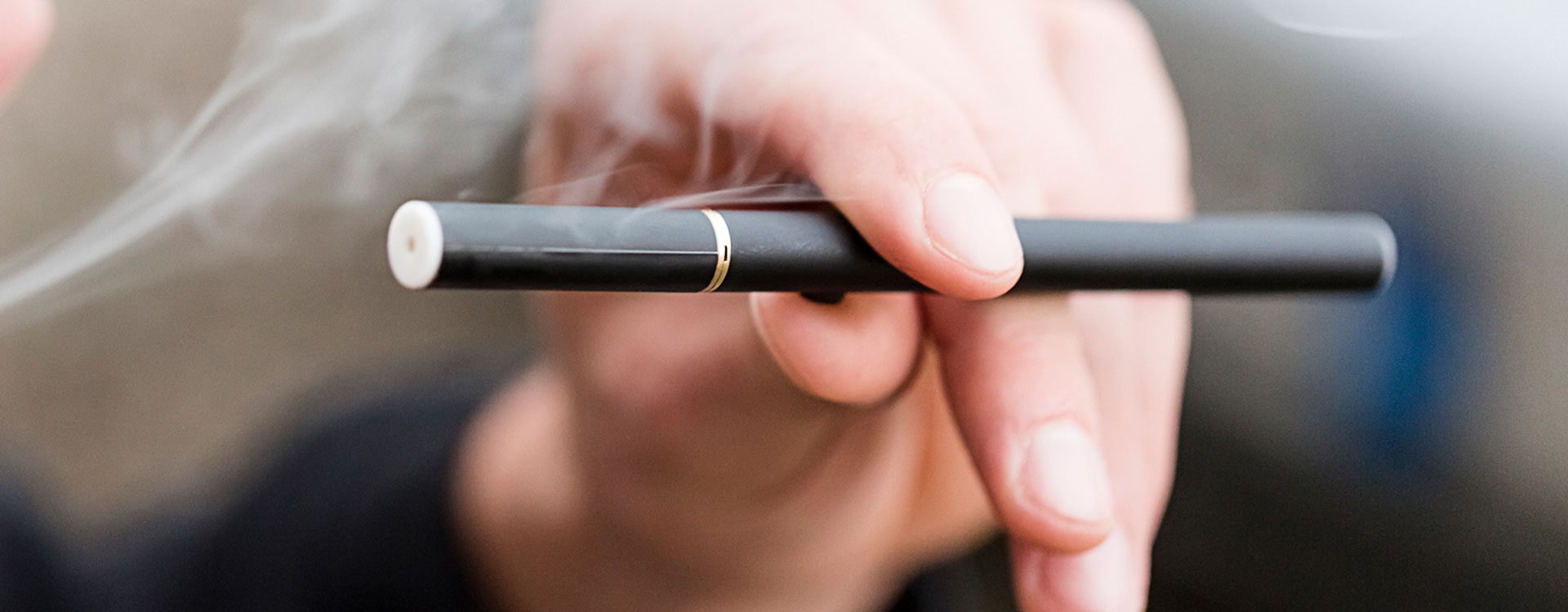While cigarette smoking has declined in adults, studies show vaping has increased by nearly 80 percent in high school students and nearly 50 percent in middle school students in the last year. Electronic cigarettes are also known as e-cigarettes, vapes, electronic nicotine delivery systems (ENDS), e-hookahs and vape pens.
In our country, tobacco use is the leading cause of preventable death. E-cigarettes may seem like a safer alternative to smoking, but the research is showing otherwise.
What are electronic cigarettes?
Electronic cigarettes can look like regular cigarettes, pipes, pens or USB flash drives. E-cigarette cartridges contain a liquid that is infused with nicotine as well as additional chemicals, colorants and flavors. The liquid is heated in the device and users inhale an aerosol or vapor.
The truth about e-cigarettes
They target kids and teens. Unfortunately, e-cigarette manufacturers market sweet-flavored products that may be appealing to kids and teens. The good news is the Food and Drug Administration (FDA) has regulations in place that do not allow minors to buy e-cigarettes online or in stores.
They may be a gateway to teen smoking. According to the National Academies of Science, Engineering and Medicine, teens and young adults who use e-cigarettes are more likely to use traditional cigarettes in the future.
E-cigarettes are not safe for young people. According to the Centers for Disease Control and Prevention (CDC), e-cigarettes are not safe for kids, teens or young adults. Nicotine, found in most e-cigarettes, is a highly addictive drug that can harm the developing adolescent brain.
E-cigarettes won’t help you quit smoking. According to the FDA, e-cigarettes have not been found effective and safe in helping people quit smoking.
E-cigarettes can contain toxic chemicals. Researchers at the University of North Carolina found that inhaling the liquid in e-cigarettes exposes people to high levels of toxins. These include cancer-causing chemicals, heavy metals (like tin, nickel and lead), nicotine, volatile organic compounds (VOCs), flavorings linked to serious lung disease, and ultrafine particles that can be absorbed deep in the lungs.
There are secondhand smoke risks. The Surgeon General found that secondhand smoke from e-cigarettes contains harmful chemicals linked to lung disease and chemicals found in car exhaust, lead, nickel and tin.
Can e-cigarettes cause lung cancer?
Because e-cigarettes are a relatively new product, there isn’t research yet on their long-term health effects. However, we do know that inhaling harmful chemicals – like those found in e-cigarettes – can cause lung damage and disease.
The bottom line: Using e-cigarettes is not safe. The FDA, CDC and American Lung Association say e-cigarettes are not safe for young adults and teens, and do not support e-cigarette use for smoking cessation.
What to know if you’re a smoker
If you need help quitting smoking, talk to your primary care doctor. There are FDA-approved medications and counseling methods that can help. You can also call 1-800-QUITNOW or 1-800-LUNGUSA.
Pardee also offers low-dose CT scans for patients at high risk for lung cancer. Those at high risk are people ages 55 to 77 who have a smoking history equivalent to a pack of cigarettes every day for 30 years, and who currently smoke or have quit within the last 15 years. Ask your doctor if you are a candidate for a lung cancer screening.
To find a doctor near you, visit pardeehospital.org.





